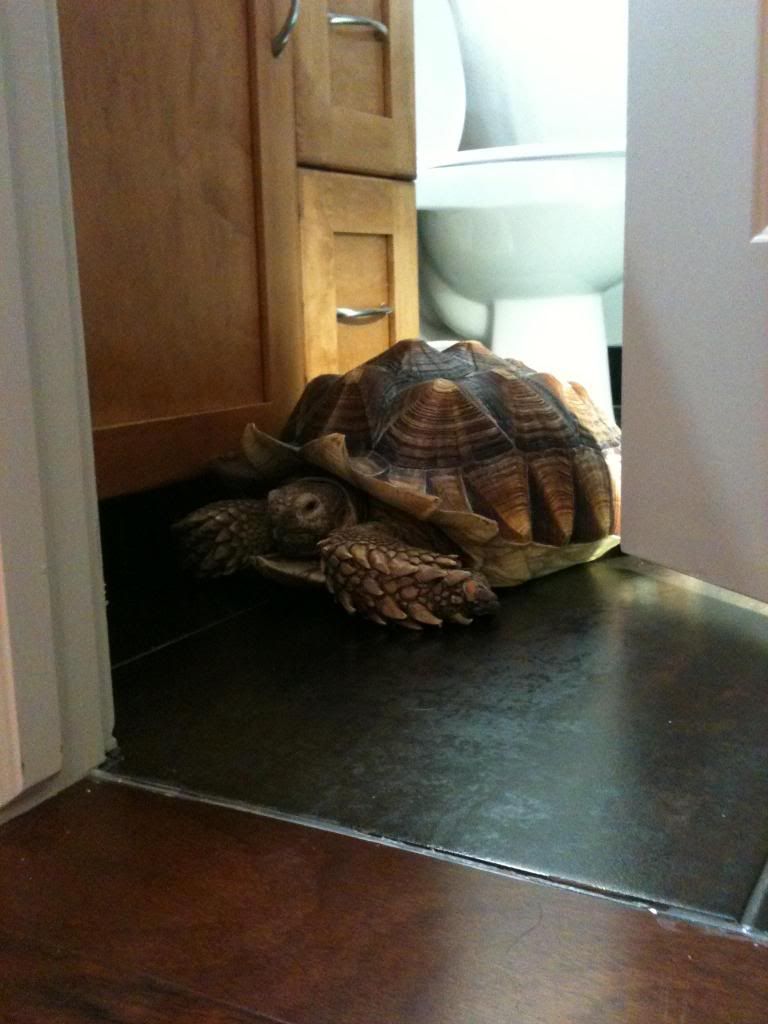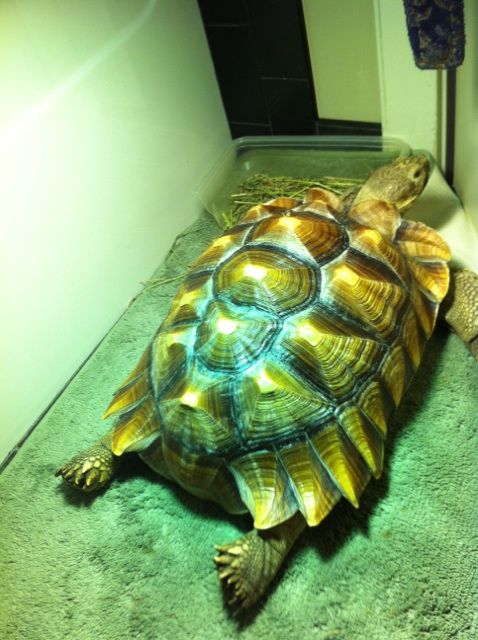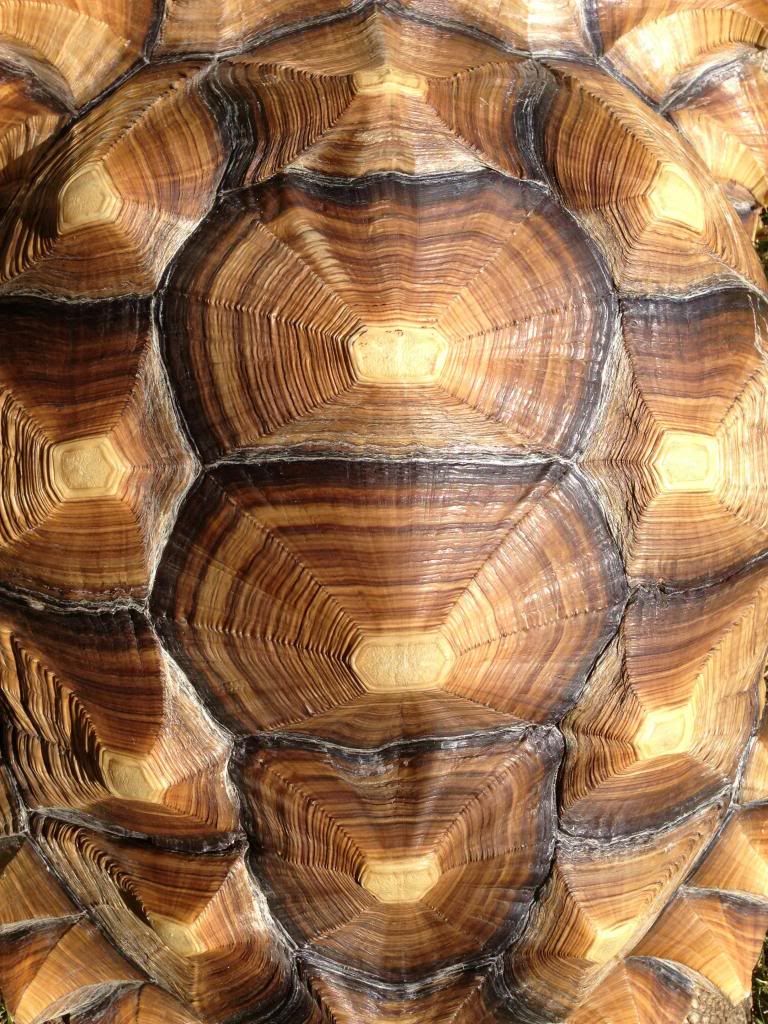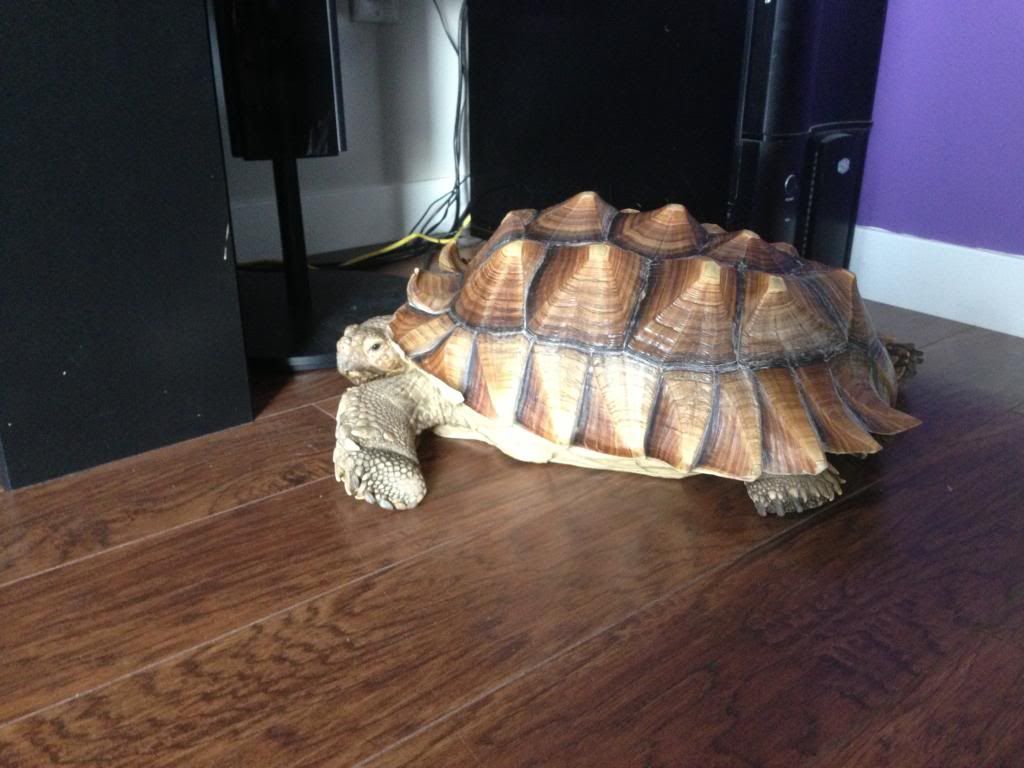Hey!
I've been able to find information on young Sulcatas and how to prevent pyramiding, which is super, but my tortoise is 7-8 years old. I've only had him for two years, and so his pyramid condition is no fault of my own. I'm pretty sure that most of his pyramiding was from his diet, as his previous caretaker suggested I feed him a lot of vegetables and boasted about how much he likes strawberries. I had to do a lot of work to get him to eat hay or grass at all.
Now his diet is perfect, and I've inspected pictures of him from when I got him and now. His pyramiding certainly hasn't gotten worse, but it hasn't gotten better, either.
My question is:
Is it possible that with patience and a perfect diet, his shell could grow up around the pyramids and reduce them? Or will he just always be super pyramidy?
Thanks!
I've been able to find information on young Sulcatas and how to prevent pyramiding, which is super, but my tortoise is 7-8 years old. I've only had him for two years, and so his pyramid condition is no fault of my own. I'm pretty sure that most of his pyramiding was from his diet, as his previous caretaker suggested I feed him a lot of vegetables and boasted about how much he likes strawberries. I had to do a lot of work to get him to eat hay or grass at all.
Now his diet is perfect, and I've inspected pictures of him from when I got him and now. His pyramiding certainly hasn't gotten worse, but it hasn't gotten better, either.
My question is:
Is it possible that with patience and a perfect diet, his shell could grow up around the pyramids and reduce them? Or will he just always be super pyramidy?
Thanks!



